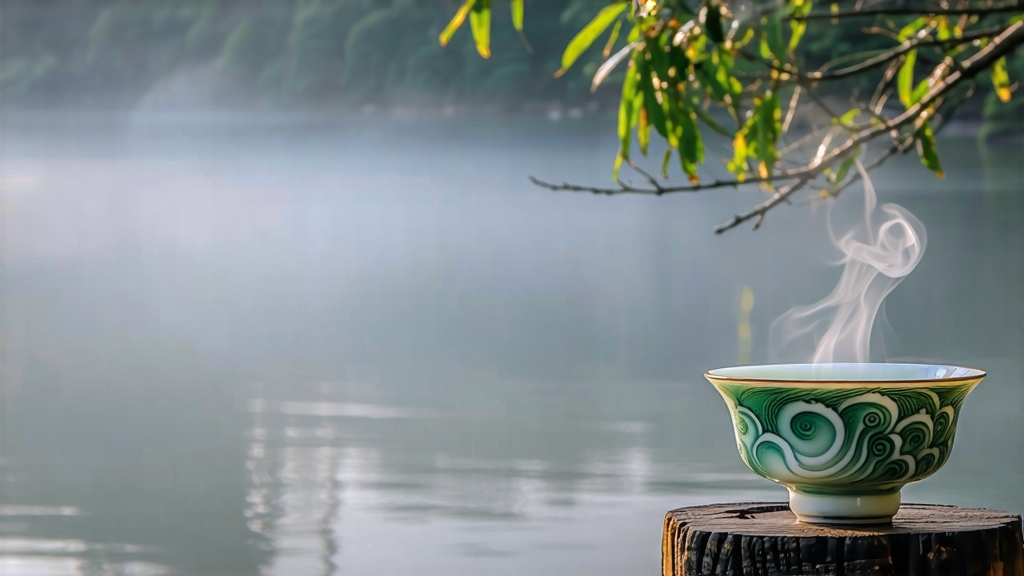
Tucked into the mist-veiled hills that cradle China’s vast Taihu Lake, Biluochun—literally “Green Snail Spring”—has for three centuries been celebrated as one of the country’s ten most famous teas. Foreign drinkers often meet it under the older romanization “Pi Lo Chun,” yet whatever the spelling, the leaf tells the same story: tiny, jade-green spirals that smell of wild apricot and fresh cream, unfolding in water to release a liquor so soft and fragrant it once earned the imperial nickname “Scary Fragrance,” allegedly because a Manchu queen found its perfume almost too seductive for the court.
Historical records first mention the tea during the late Ming dynasty, when a wandering monk in Dongting Mountain noticed local tea plants growing interspersed with peach, plum, and apricot trees. The fruit blossoms, heavy with spring dew, lent their nectar to the young leaves, imprinting them with an unmistakable floral-sweet bouquet. By the Kangxi era (1661-1722) the leaf had become a tribute tea; the emperor himself is said to have renamed it Biluochun after its snail-shell shape and early-spring harvest. European merchants encountered it in Canton’s Thirteen Factories, and 19th-century botanists at Kew Gardens listed it among the “aromatic curiosities of Cathay,” yet only in the last two decades has specialty-grade Biluochun become reliably available abroad, thanks to refrigerated shipping and vacuum-packed nitrogen flushing that preserve its volatile, fruit-laden aroma.
True Biluochun comes exclusively from the East and West Dongting Mountains of Jiangsu Province, two granite islands rising from Taihu’s shallows. The lake’s microclimate—morning mist that lingers until noon, diffusing sunlight into a cool, even glow—forces the tea bushes to grow slowly, stacking amino acids and fragrant compounds in the miniature leaves. Unlike the continent’s inland gardens, these hills never frost after Qingming (early April), so the earliest picking, mingqian pre-Qingming leaf, can begin in mid-March when each bud still wears a silvery down and measures barely one centimeter. Connoisseurs speak of three grades: Supreme (seven thousand buds per 100 g), Grade I (five thousand), and Grade II (three thousand). Anything larger, or harvested after April 10, is politely called “Dongting green” and sold at a fraction of the price.
Crafting Biluochun is a race against time and oxidation. Pickers work from 5 a.m. to 9 a.m., dropping buds into shallow bamboo baskets lined with nettle cloth to prevent bruising. Within thirty minutes the leaves reach the village workshop, where they are spread no thicker than two centimeters on bamboo trays and withered for exactly forty minutes in a drafty loft; the goal is to reduce moisture to 68 % without allowing grassy notes to dominate. Next comes the most iconic step—hand-firing in a 160 °C wok. A master maker, wrists protected only by thin cotton sleeves, tosses a handful of leaves for eight seconds, then immediately presses and rubs them against the iron surface using three fingers shaped into a claw. The motion must curl each bud into a tight spiral while driving out an additional 20 % moisture. One kilogram of finished tea demands 14 000 repetitions of this press-and-roll gesture, performed across three successive firings that drop in temperature from 160 °C to 80 °C. When done correctly, the leaf surface emerges matte, almost whitish, and the downy tips tuck inward like sleeping snails. A final low bake at 60 °C for twenty minutes sets the fragrance; the entire process, from mountain to finished tea, spans less than six hours.
Brewing Biluochun is an exercise in restraint. Its delicacy wilts under boiling water, yet lukewarm water fails to coax the full fruit-musk spectrum. The Chinese formula is “one gram per 50 ml at 70 °C,” best approximated by letting freshly boiled water stand for four minutes or by transferring it twice between glass pitchers. A tall, thin glass—not a tiny gaiwan—allows the famous “tea rain” to be observed: as the spirals sink, they release a slow cascade of micro-bubbles laden with aroma. Steep thirty seconds for the first infusion, fifteen for the second, and add five seconds for each subsequent pour; good Biluochun yields five clear brews before its honeyed note fades into quiet vegetal sweetness. Because the leaf is so small,